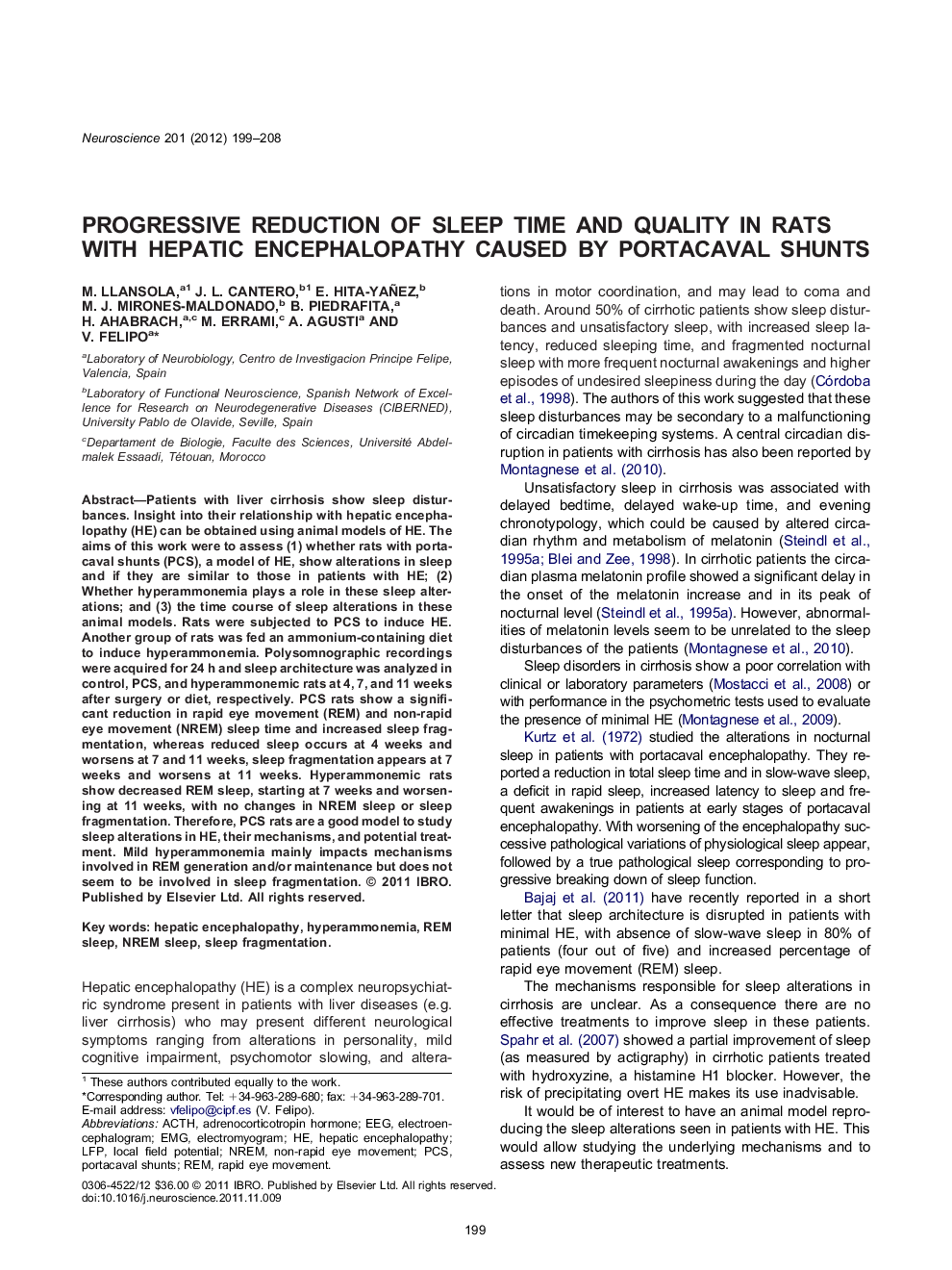| Article ID | Journal | Published Year | Pages | File Type |
|---|---|---|---|---|
| 4338554 | Neuroscience | 2012 | 10 Pages |
Patients with liver cirrhosis show sleep disturbances. Insight into their relationship with hepatic encephalopathy (HE) can be obtained using animal models of HE. The aims of this work were to assess (1) whether rats with portacaval shunts (PCS), a model of HE, show alterations in sleep and if they are similar to those in patients with HE; (2) Whether hyperammonemia plays a role in these sleep alterations; and (3) the time course of sleep alterations in these animal models. Rats were subjected to PCS to induce HE. Another group of rats was fed an ammonium-containing diet to induce hyperammonemia. Polysomnographic recordings were acquired for 24 h and sleep architecture was analyzed in control, PCS, and hyperammonemic rats at 4, 7, and 11 weeks after surgery or diet, respectively. PCS rats show a significant reduction in rapid eye movement (REM) and non-rapid eye movement (NREM) sleep time and increased sleep fragmentation, whereas reduced sleep occurs at 4 weeks and worsens at 7 and 11 weeks, sleep fragmentation appears at 7 weeks and worsens at 11 weeks. Hyperammonemic rats show decreased REM sleep, starting at 7 weeks and worsening at 11 weeks, with no changes in NREM sleep or sleep fragmentation. Therefore, PCS rats are a good model to study sleep alterations in HE, their mechanisms, and potential treatment. Mild hyperammonemia mainly impacts mechanisms involved in REM generation and/or maintenance but does not seem to be involved in sleep fragmentation.
▶Rats with portacaval shunts (PCS) show reduced sleep time and sleep fragmentation. ▶Reduced sleep occurs at 4 weeks and worsens progressively at 7 and 11 weeks. ▶Sleep fragmentation appears at 7 weeks and worsens at 11 weeks. ▶Hyperammonemic rats show reduced REM without sleep fragmentation. ▶PCS rats are a good model, reproducing sleep alterations of cirrhotic patients.
